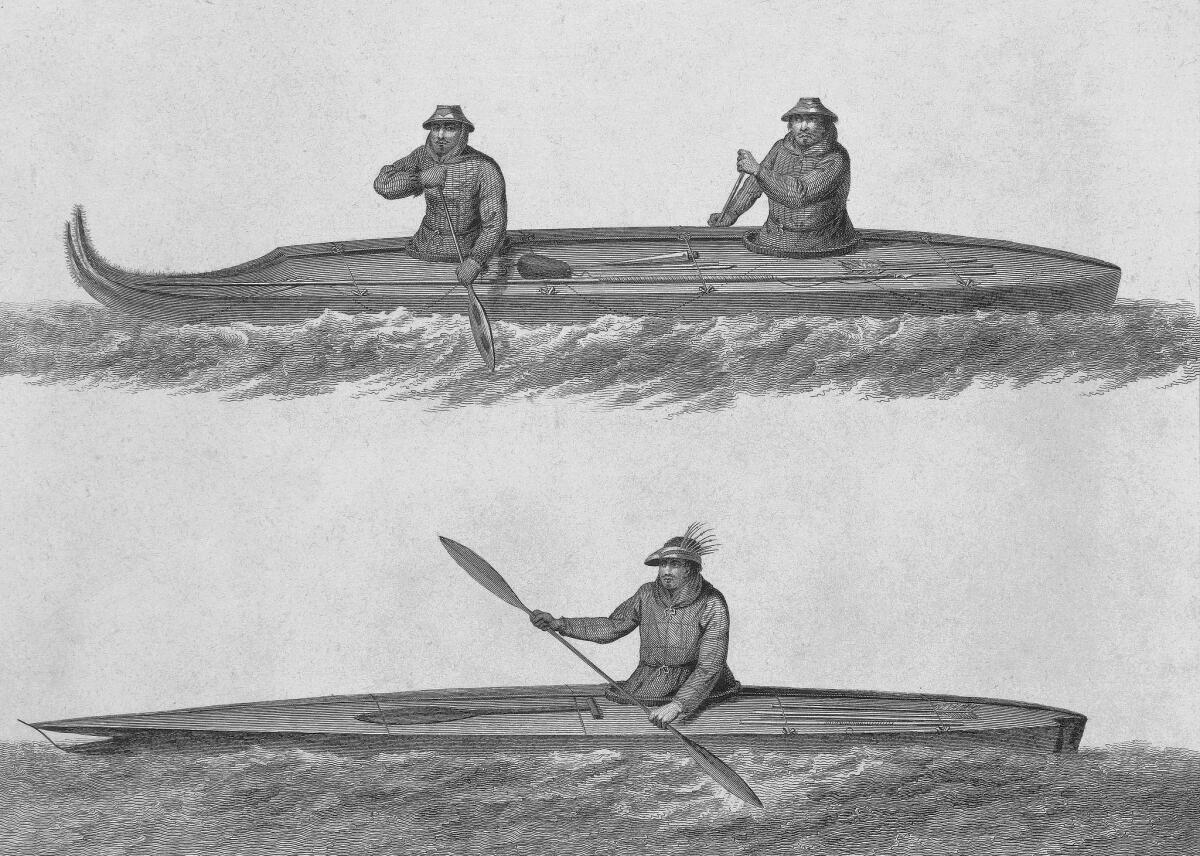Review: ‘West of the Revolution’ charts the 1776 American frontier

As America’s founders gathered in Philadelphia in 1776, two Franciscans named Francisco Atanasio Dominguez and Francisco Silvestre Velez de Escalante began a journey west from Santa Fe, N.M., hoping to find a way to the Pacific Coast. Negotiating with Native Americans and faltering over harsh terrain, they had no idea that 13 colonies were at the same time declaring independence from Britain, asserting the right to life, liberty and the pursuit of happiness, creating a country that would one day encompass much of the continent.
In “West of the Revolution: An Uncommon History of 1776,” historian Claudio Saunt evokes this shadow saga of America’s founding year in landscapes distinct from the 13 colonies. This is a history more terrible than wondrous, a necessary counternarrative to our enlightened Revolution.
Saunt focuses on nine locations across North America: Alaska’s Aleutian Islands, San Diego, San Francisco, North Carolina, New Mexico, Saskatchewan in Canada, South Dakota’s Black Hills, the Osage country along the Mississippi River and the Creek lands in Georgia and Florida. He also brings in outside events, such as the 1763 Treaty of Paris, to develop interesting connections.
By 1776, Russians had moved into the Aleutian Islands for the lucrative fur trade. They were dependent on the Aleutians to help them survive, but there was violence and distrust on both sides. The Russian mode of business there was brutal: Stay for months or years to reap the largest fur harvest possible, take hostages and slaughter whole communities.
Rumors of Russia’s incursions into the Aleutian islands reached Spain, spurring the Crown to extend its missions north of Baja into Alta California. This “combustible mix of geographic misconceptions and imperial anxiety made colonization of the California coast appear essential to Spain’s survival in the Pacific basin,” Saunt explains.
Fully established in Mexico, Spanish forces moved north by sea, setting up missions along the coast. In San Diego, the effort to convert the local Kumeyaay Indians had gotten off to a slow start, but by 1775, more than 100 had been baptized. Then one November night, hundreds more attacked, burning the mission to the ground — although the soldiers’ fort remained intact.
To be interrogated by a Spanish soldier was as bad as being taken captive by a Russian fur trader. Military Gov. Fernando Rivera y Moncada wrote in his diary that he told prisoners, “I must know everything; that I have a medicine to make them tell the truth; that it is not nor am I like their Indian witch doctors who peddle so many lies; that my medicine is punishment, and the great pain will force them” to confess. Saunt shows that no answer satisfied the angry governor — which was particularly tragic for one of the earliest converts, who had been his godson.
Saunt’s stories of the American frontier largely involve encounters between Native Americans and Old World immigrants or their descendants. We know now that things ended badly for the Native Americans, who lost territory, autonomy, culture, language and whole populations. Yet in the 18th century, much of North America’s interior was entirely their domain.
So when Dominguez and Escalante set forth from the then-remote settlement Santa Fe, they appealed to Native Americans to help them find their way west. They brought along an artist who created the first European map of what is now the Four Corners region, despite getting some major landmarks wrong.
With a goal of uniting the interior with the coast, Dominguez and Escalante were able to make progress only when a guide from one tribe took them to the next community; without guides they made poor decisions, got lost and grew so hungry they turned back.
Saunt stretches the scope of his history to provide context and background. He even moves forward in time to the recorded histories of the Lakota, who cite 1776 as the time of the discovery of the Black Hills. He also pulls in archaeology and more general history, although this keeps the story of the Lakota at a distance; it never takes shape as firmly as firsthand accounts of other tribes.
In Saskatchewan, these tribes had the upper hand, partly because they knew how to handle the brutal winters and partly because they had multiple trading partners other than the British. So too did the Osage, who controlled a long stretch of the Mississippi.
The Treaty of Paris designated the Mississippi as the dividing line between British and Spanish territories: British east, Spanish west. But the winding, slow river worked as a trade thoroughfare, not a divider. It empowered the Osage Indians, whose fortunes and territory grew tremendously.
The opposite was true for the Creeks, whose lands in Georgia were surrounded by British territory; they had no rivals to use for leverage. They tried but failed to forge an alliance with Spain via Havana to throw out the British — not so different from what the colonists were doing.
For the most part, Saunt looks to trade as the way to explain shifts in allegiances and power. He has created a sweeping narrative of noncolonial America in 1776. But he is at his most colorful when he finds individual stories, such as that of the Frenchman floating down the Arkansas River with “one severed head and the corpses of two of his companions.”
The strangeness of proto-American history may be found in the details.
West of the Revolution
An Uncommon History of 1776
Claudio Saunt
W.W. Norton: 284 pp., $26.95
More to Read
Sign up for our Book Club newsletter
Get the latest news, events and more from the Los Angeles Times Book Club, and help us get L.A. reading and talking.
You may occasionally receive promotional content from the Los Angeles Times.








